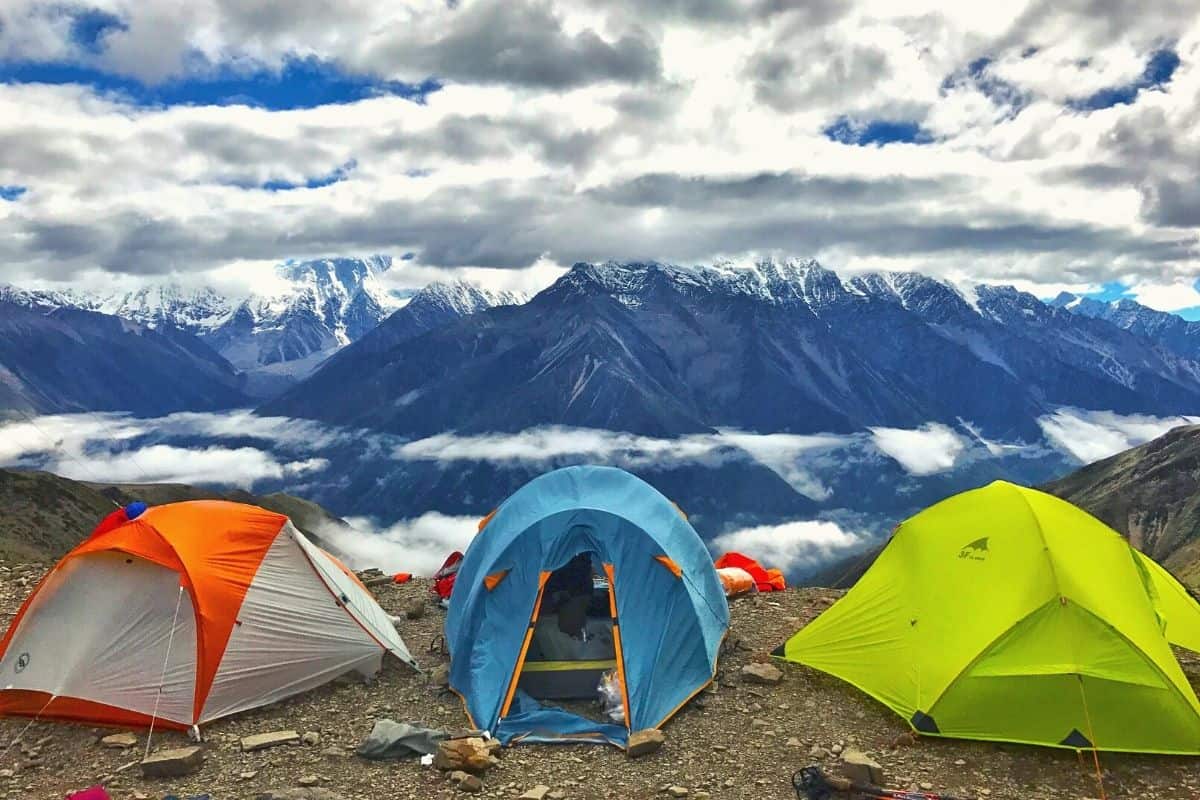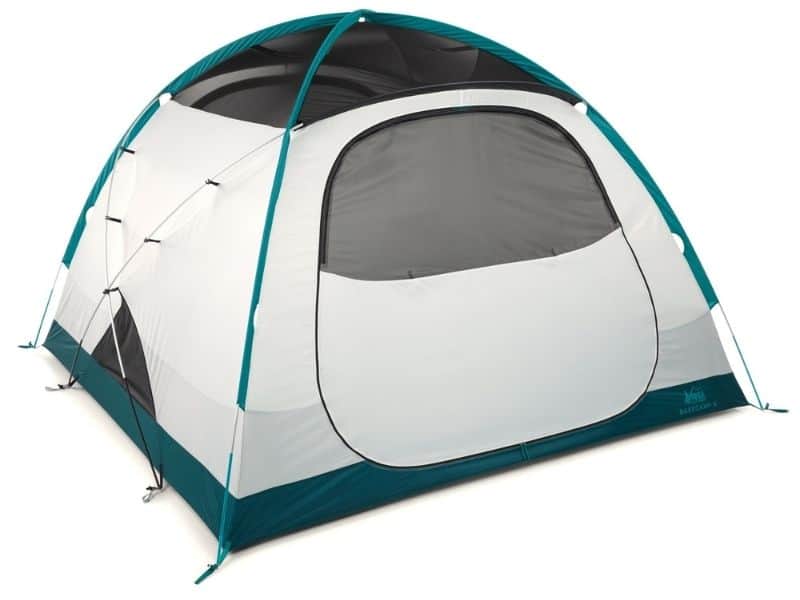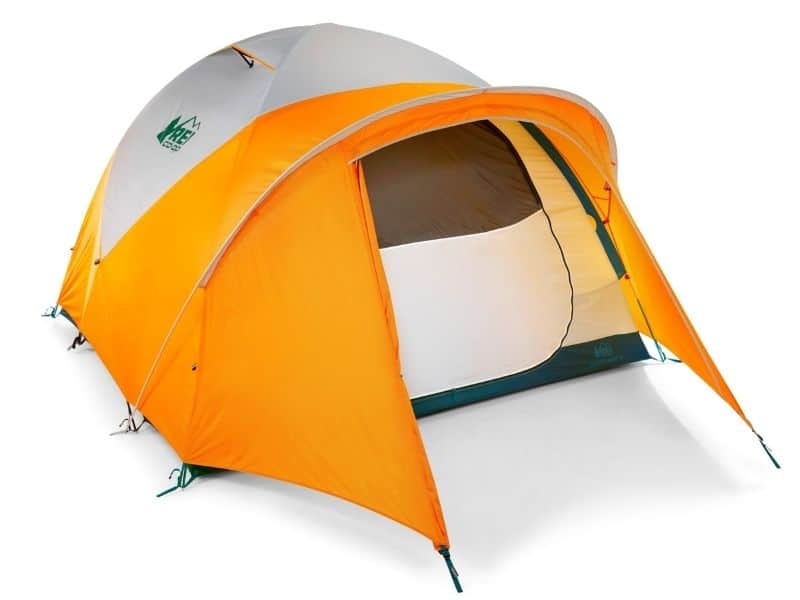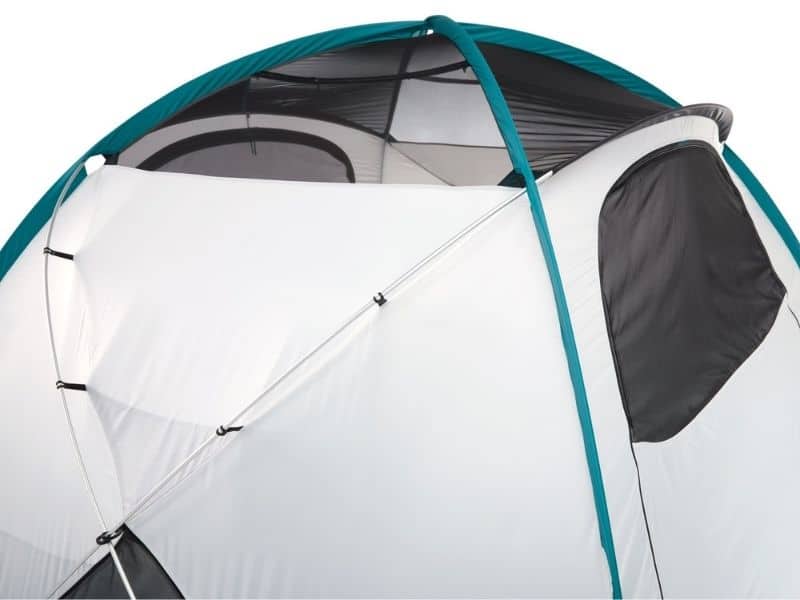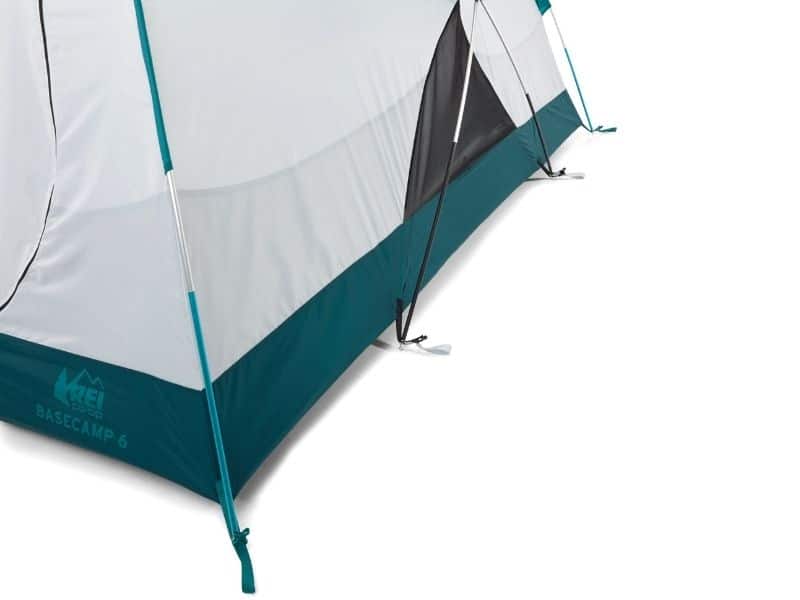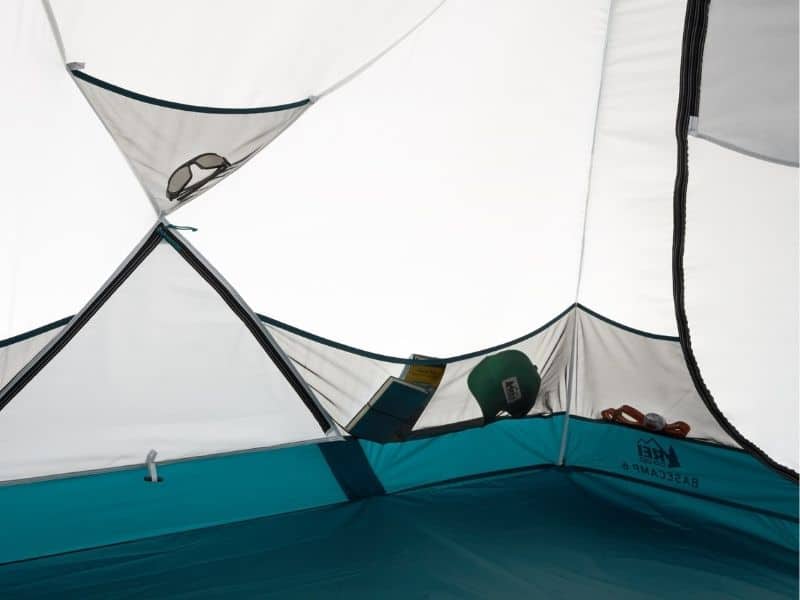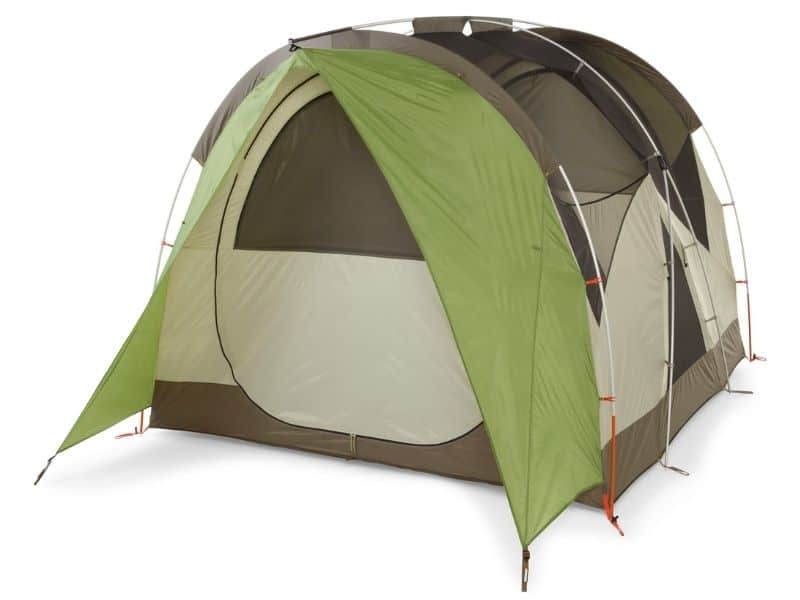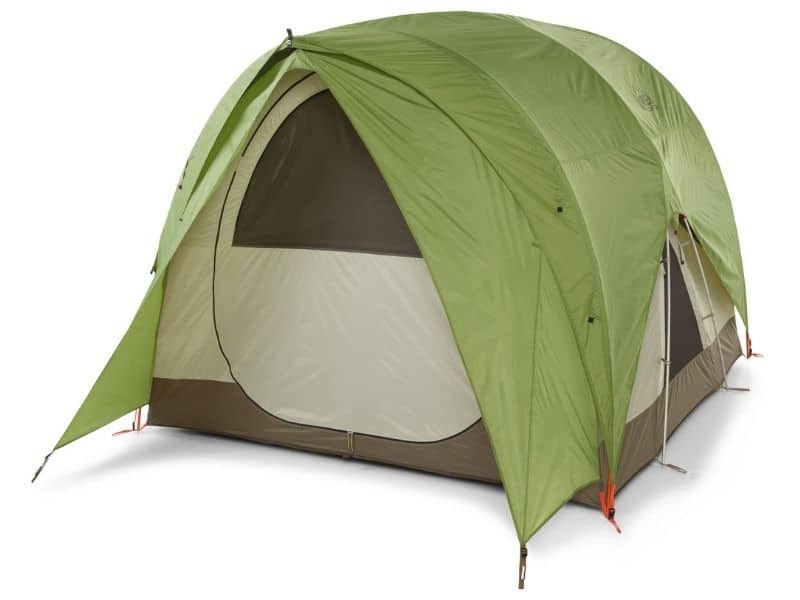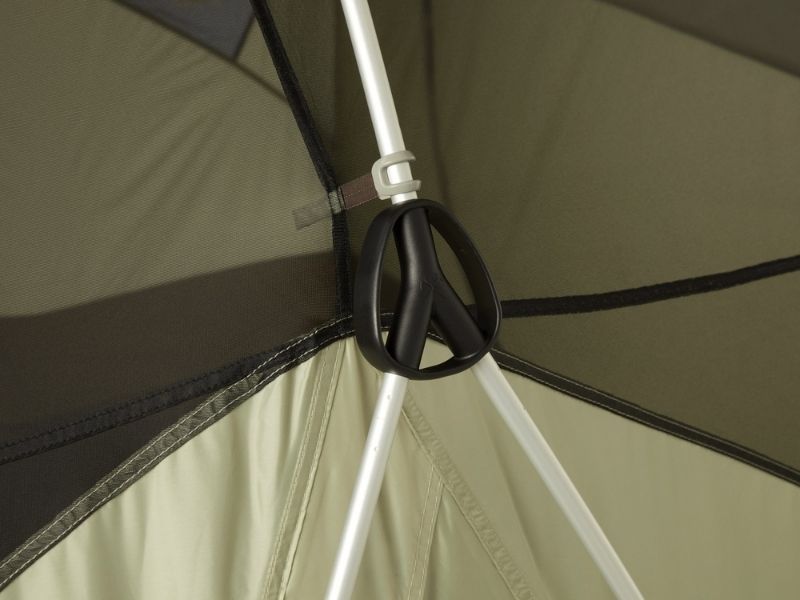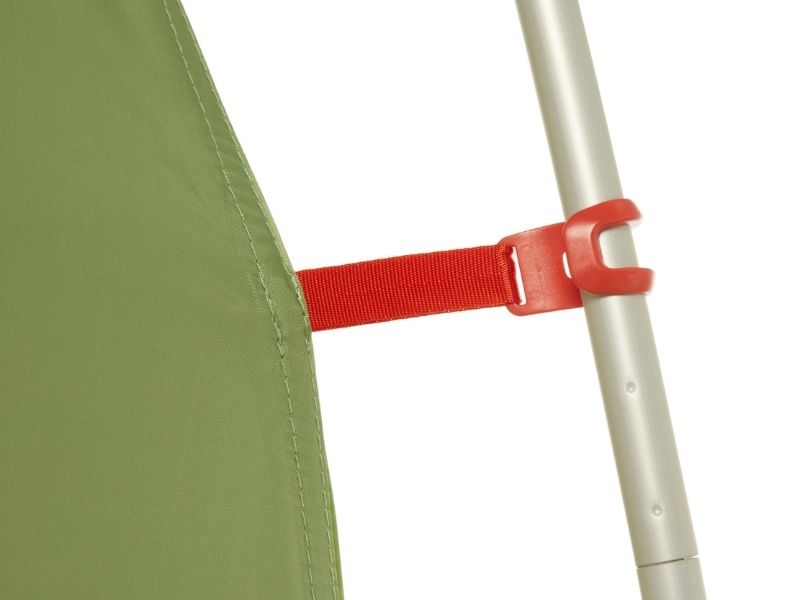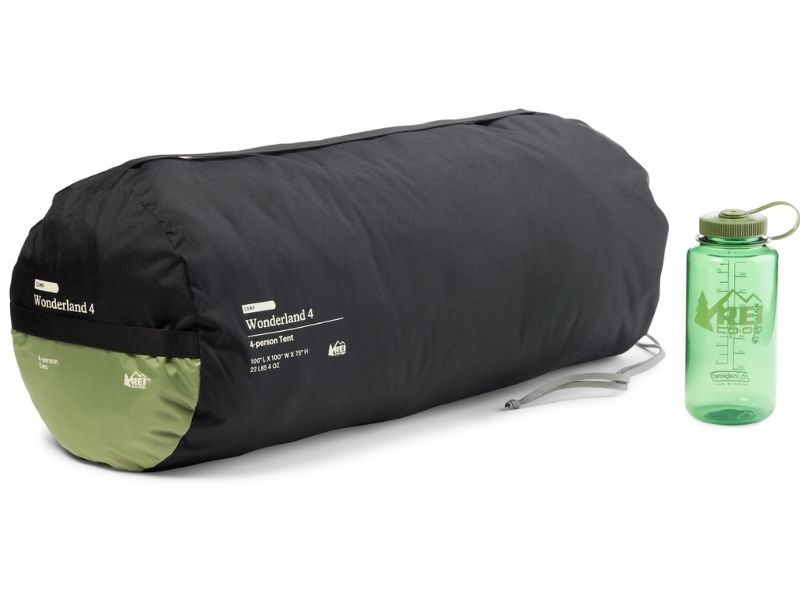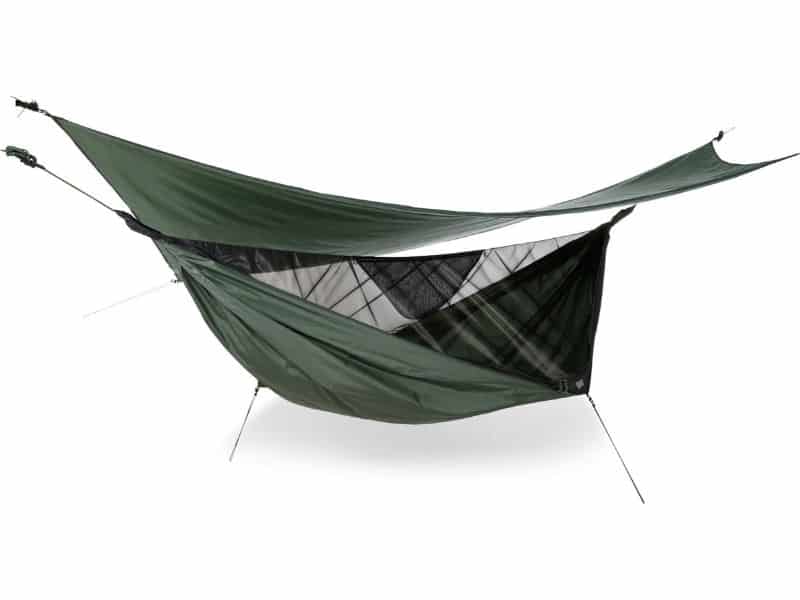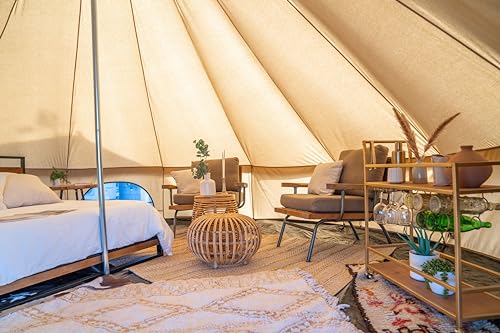Tents come in a wide variety of shapes and sizes. Each offers something a little bit (or a lot!) different and has pros and cons that make it less or more suitable for varying kinds of camping and the needs of individual campers.
Not sure what type of tent will be best for your future escapades? Worry not! Below, we offer a short guide to the different types of tent out there along with a quick summary of each type’s advantages and disadvantages.
From traditional tents to the perfect glamping tent, from an ultralight tent for backpacking to a beach tent for sunny days out, our guide has got you covered!
Table of Contents
- The Sixteen Most Common Types of Camping Tent
- 1. Dome Tent
- 2. A-Frame Tent/Ridge Tent
- 3. Geodesic and Semi-Geodesic Tent
- 4. Cabin Tents
- 5. Tunnel Tent
- 6. Backpacking Tent
- 7. Teepee Tent
- 8. Pop-Up Tent or Instant Tent
- 9. Multi-Room Tent
- 10. Inflatable Tent
- 11. Suspended Tents/Hammock Tent
- 12. Rooftop Tents & Car-Top Tents
- 13. Bathroom Tents
- 14. Canvas Tents
- 15. Bivy Tent
- 16. Canopy Tent
- Tent Types Galore!
The Sixteen Most Common Types of Camping Tent
1. Dome Tent
Dome tents are probably the most popular style of tent owing to the ease with which they can be set up, their light weight, and the increased living space their curved, dome-shaped design offers, particularly with regards to headroom.
Pros
- Lightweight
- Easy to pitch
- More livable and spacious than other tent designs
- Some models are freestanding
Cons
- Lose stability in large sizes
- Don’t perform as well as geodesic models in high winds
2. A-Frame Tent/Ridge Tent
These tents rely on a duo of poles at either end and tension from tie-out points in the tent body and fly to create a surprisingly stable, A-shaped shelter.
Pros
- Easy to pitch
- Lightweight (if you can substitute trekking poles for those supplied)
- Reasonably stable in moderate to strong winds
Cons
- Poles can interfere with sleeping space
- Lack of headroom – walls decline sharply from a high center point or ridge
- Tend to tip, buckle, or even collapse in high winds if not pitched perfectly
3. Geodesic and Semi-Geodesic Tent
A geodesic tent is essentially a dome tent with more poles. These poles criss-cross at a center point at the top of the tent, thereby forming a lattice shell of triangles that strengthen the overall structure providing excellent stability in harsh conditions.
Semi-geodesic tents are, in essence, scaled-down versions of geodesic tents that use fewer poles. As a result, they are often lighter but offer less stability in high winds.
Pros
- The most stable type of backcountry shelter available
- Perform well in extreme conditions
- Freestanding
Cons
- Many models are too heavy for backpacking
- Large pack size
- Occasionally tricky to pitch
- Can be pricey
4. Cabin Tents
Cabin tents are designed to be like standard wood cabins but made with fabric and poles. The result? A roomy structure with steep walls that create more headroom from end to end and wall to wall. With larger models, this means even tall campers can walk around inside without having to hunch.
This design makes a cabin tent more like a home-away-from-home andideal for family camping.
Pros
- Spacious
- Great headroom
- Ideal for family camping
Cons
- Often heavy
- Often tricky to pitch
- Not as stable in high winds
5. Tunnel Tent
Tunnel tents use a succession of poles arced over the sleeping area to provide a – you guessed it! – a tunnel shape living space inside the body of the tent. These tents are rarely freestanding and rely on careful pitching (with numerous guy lines and pegs) for stability.
Pros
- Lightweight
- Spacious, for the most part
- Large vestibule area
- Usually, offer plenty of headroom
Cons
- Prone to sagging (and collecting water) in the middle
- Not the most stable in high winds
- Difficult to pitch without a second pair of hands
- Not freestanding
6. Backpacking Tent
Backpacking tents are made for carrying long distances on extended camping trips, usually deep in the backcountry or on thru-hikes. Generally speaking, they offer solid across-the-board performance and are very lightweight, but usually, skimp on a few bells and whistles to cut down on weight.
Pros
- Lightweight
- Small pack size
- Typically hard-wearing, rugged, and offer solid weather-resistance
Cons
- Usually less spacious than other varieties of tent
- Low peak height
- Often expensive
7. Teepee Tent
Teepee tents debuted as novelty items in the tenting world but have since evolved into more practical affairs that use a single central pole and numerous guy lines and stakes to create a cone-shaped structure often capable of accommodating a large number of sleepers.
Pros
- Spacious
- Excellent peak height
- Easy to pitch
Cons
- Heavy
- Flooring not always included
- Taller models lack stability
8. Pop-Up Tent or Instant Tent
As with all things instant (coffee and grub, for example), these tents are great time-savers but often (not always) entail a compromise in quality.
As the name suggests, they pitch in next to no time courtesy of telescoping or folding poles that connect to a central pole hub. Once you’ve laid the tent out, all you have to do is pull a release cord or lever and the structure assembles almost entirely by itself.
Many beach tents are also pop-up tents. These, for the most part, are incredibly quick to pitch but offer little to no water resistance.
Pros
- Set up in next to no time
- Freestanding
- Lightweight
- Tiny pack size
Cons
- Often offer limited weather resistance
- Limited capacity
9. Multi-Room Tent
As the name suggests, multi-room tents boast partitions that allow larger groups or families to enjoy more privacy and let you keep your gear separate from your sleeping space.
Pros
- Spacious
- Allow for privacy
Cons
- Weight – impractical for camping far from your vehicle
- Tricky to set up
- Less stable than smaller tents
10. Inflatable Tent
This relative newcomer to the world of camping is a bit of a game-changer, using inflatable columns or tubes instead of standard aluminum tent poles to simplify setup and provide the tent’s structure.
While it’s hard to imagine inflatable tents will ever be more popular than regular tents, there’s no denying they have their advantages. To pitch, simply unfold the tent and pump it full of air with a foot pump. To pack it away, all you need to do is open a valve to deflate it, then roll it away.
Pros
- Easier to pitch
- Robust
- Surprising good performance in strong winds
- Ideal for car camping
- Pole-free!
Cons
- Heavy
- Pricey
- Bulky
- Unless you have the lung power of a whale, you’ll have to carry a foot pump to inflate the ‘poles’
11. Suspended Tents/Hammock Tent
In short, hammock tents are hybrid models that combine the features of both a hammock and a tent. In most cases, they consist of a hammock with a custom-made ridgeline fly or tarp that provides protection from the rain and a built-in bug net.
A hammock tent can be lashed to 2-4 trees with suspension straps to provide an elevated living space.
Pros
- Place sleepers above wet, uneven, rocky terrain
- Usually very lightweight
- Ventilate better than most ground tents
Cons
- ‘Pitching’ requires trees
- Tricky to set up
12. Rooftop Tents & Car-Top Tents
These typically robust, commodious tents can be attached to the roof of your vehicle and provide an elevated sleeping space accessed by a ladder attached to the tent door or vestibule.
Pros
- Your vehicle carries them for you!
- Usually very robust and weather-resistant
- Easy to set up
- Usually sold with an inbuilt mattress
Cons
- Expensive
- Only suitable for roadside camping
- Aerodynamic drag and added weight can add to fuel costs
13. Bathroom Tents
These pod-style, upright vestibules are common features at popular basecamps (Everest, Annapurna, Denali, Kilimanjaro) and are becoming ever more popular with large groups of campers looking to keep things civilized when it comes to toilet time and clothing changes.
Pros
- Handy provider of privacy when camping in large groups
- Useful on expeditions where concealed, open-air toilet locations are hard to find or prohibited
Cons
- For many a year, trees and bushes have served the same purpose perfectly adequately
- Additional pack weight
14. Canvas Tents
Canvas camping tents are, for the most part, luxury tents that use burly canvas and cotton canvas instead of standard nylon or polyester.
A canvas tent can come in many styles, but most commonly take the form of bell tents, pyramid tents, and occasionally ridge tents.
Pros
- Robust
- Durable
- Waterproof
Cons
- Heavy
- Pricey
15. Bivy Tent
Bivy tents are small, lightweight, one-person affairs that are ideal for ounce-counters, solo adventurers, and those who like to travel fast and light.
Early “bivy bags” were essentially large sleeping bag covers that would keep you and your bag dry in inclement weather. These days, many mimic the structure of small A-frame tents or use looped poles at the top and bottom to provide the sleeper with a little more room.
Pros
- credibly lightweight
- Compact
- (Mostly) highly weather-resistant
Cons
- Minimal interior space
- No storage space
16. Canopy Tent
Canopy tents are simple, four-pole structures that are mostly used for outdoor events like weddings, barbecues, and farmer’s markets. Unlike all the other tents on our list, this style of tent consists of a pole structure and roof only, with no walls.
Pros
- Ideal for events
- Provide shade and protection from light rain
Cons
- No walls
Tent Types Galore!
Who knew there were so many varieties of tent?! We hope the above guide has helped you decide which type of shelter will be best for your future escapades.
If you have any questions or comments about any of the different tent styles, drop us a line in the comment box below!
